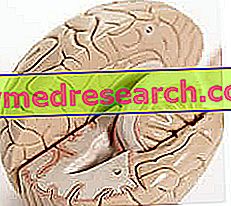Generality and Definition
Epigenetics deals with the study of all those heritable modifications that lead to variations in gene expression without altering the DNA sequence, thus without causing changes in the sequence of nucleotides that compose it.

Using a more technical language, on the other hand, we can say that epigenetics studies all those modifications and all those changes that are able to vary the phenotype of an individual, without however altering the genotype.
The merit of having coined the term "epigenetics" is attributed to the biologist Conrad Hal Waddington who, in 1942, defined it as "the branch of biology that studies the causal interactions between genes and their product, and establishes the phenotype ".
Explained in these terms, epigenetics may seem rather complex; to better understand the concept it may be useful to open a small parenthesis on how DNA is made and on how the transcription of the genes contained in it takes place.
DNA and Gene Transcription
DNA is contained within the cell nucleus. It has a double helix structure and consists of repeating units, called nucleotides.
Most of the DNA contained within our cells is organized into particular subunits called nucleosomes .
The nucleosomes are made up of a central part (called core) composed of proteins called histones around which the DNA is wrapped.
The set of DNA and histones constitutes the so-called chromatin .
The transcription of the genes contained in the DNA depends precisely on the packaging of the latter within the nucleosomes. In fact, the process of gene transcription is regulated by transcription factors, particular proteins that bind to specific regulatory sequences present on the DNA and which are able to activate or repress - depending on the case - specific genes.
A DNA with a low packing level, therefore, will allow the transcription factors to access the regulation sequences. Conversely, a DNA with a high packing level will not allow them access.
The packing level is determined by the histones themselves and by the modifications that can be made in their chemical structure.
More in detail, the acetylation of histones (ie the addition of an acetyl group at particular sites on the amino acids that make up these proteins) causes the chromatin to assume a "more relaxed" conformation allowing the entry of transcription factors, then gene transcription. On the other hand, deacetylation removes the acetyl groups, causing the chromatin to thicken and thus blocking gene transcription.

Epigenetic signals
In light of what has been said so far, we can affirm that, if epigenetics studies changes capable of changing the phenotype, but not the genotype of an individual, an epigenetic signal is that modification capable of altering the expression of a particular gene, without altering the nucleotide sequence.
Consequently, we can affirm that the acetylation of histones of which we have spoken in the preceding paragraph can be considered as an epigenetic signal; in other words, it is an epigenetic modification capable of influencing the activity of the gene (which can be transcribed or not) without altering its structure.
Another type of epigenetic modification is the methylation reaction of both DNA and the histones themselves.
For example, methylation (i.e. the addition of a methyl group) of DNA at a promoter site reduces gene transcription, whose activation is regulated precisely by that same promoter site. In fact, the promoter site is a specific DNA sequence located upstream of the genes, whose task is to allow the initiation of transcription of the same. The addition of a methyl group at this site therefore causes a kind of bulk that hinders gene transcription.
Still, other examples of epigenetic modifications currently known are phosphorylation and ubiquitination .
All these processes involving DNA and histone proteins (but not only) are regulated by other proteins that are synthesized following the transcription of other genes, whose activity can be, in turn, altered.
However, the most interesting peculiarity of an epigenetic modification is that it can take place in response to external environmental stimuli concerning, precisely, the environment that surrounds us, our lifestyle (including nutrition) and our health state.
In a sense, an epigenetic modification can be understood as an adaptive change operated by the cells.
These changes can be physiological, as happens in the case of neurons that adopt epigenetic mechanisms for learning and memory, but can also be pathological, as happens, for example, in the case of mental disorders or tumors.
Other important features of epigenetic modifications are reversibility and inheritance . In fact, these modifications can be transmitted from one cell to another, although they can still undergo further changes over time, always in response to external stimuli.
Finally, epigenetic modifications can occur at different stages of life and not only at an embryonic level (when the cells differentiate) as they once believed, but also when the organism is already developed.
Therapeutic Aspects
The discovery of epigenetics and epigenetic modifications can be widely exploited in the therapeutic field for the potential treatment of different types of pathologies, including those of the neoplastic type (tumors).
In fact, as mentioned, epigenetic modifications can also be pathological in nature; therefore, in these cases, they can be defined as real anomalies.
The researchers then hypothesized that if these changes can be influenced by external stimuli and can manifest themselves and further change throughout the life of the organism, then it is possible to intervene on them using specific molecules with the intent to report the situation in conditions of normality. This is something that cannot be done (at least not yet) when the cause of the disease lies in a real genetic mutation.
To better understand this concept we can take as an example the use that researchers have made of the knowledge of epigenetics in the field of anticancer therapies.
Epigenetics and Tumors
As is well known, neoplastic pathologies originate from genetic mutations that lead to the formation of malignant cells, which reproduce very quickly giving rise to the disease.
However, we have seen that - given the same genetic mutations - the same tumor can develop differently and in different forms from one individual to another (for example, in a person can develop a fulminant form, while in another a form chronic). The researchers believe that this different way of manifesting the pathology is regulated precisely by the phenomena that underlie epigenetics.
In particular, it has been observed that in many tumor forms, the epigenetic mechanisms leading to the onset of the disease are based precisely on the methylation and acetylation of DNA and histones (see the "Epigenetic Signals" paragraph).
Research in this field has therefore led to the synthesis of molecules that are still being tested, which are able to act at the level of these epigenetic mechanisms and to exercise some control over them.
Of course, by not acting directly on the DNA - thus not acting on the genetic mutation that causes the tumor itself - these potential drugs are not resolutive, but could slow or stop the progression of the neoplastic pathology and, at the same time, could allow a reduction in the doses of cancer chemotherapy administered, significantly improving the quality of life of the patient, as well as extending the life expectancy.
However, the mechanisms of epigenetics are not only involved in the development of cancer pathologies and the knowledge acquired up to now on it can provide new and useful cues for the synthesis of increasingly effective and specific drugs for the treatment of diseases for which there are still no targeted therapies.



